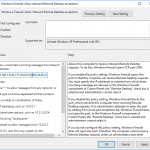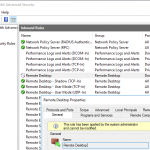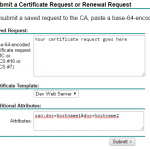I recently had to extract some data from our DirectAccess server to get information about a particular user and their number of connections during a time period along with data transferred. The Remote Access Management Console allows you to view these details but not extract or save them. So I turned to PowerShell and used the following snippet to extract what I needed.
Get-RemoteAccessConnectionStatistics –StartDateTime "1 April 2017 12:00" –EndDateTime "8 April 2017 12:00" | Export-Csv –Path "C:\Temp\DAConnections.csv"
I then cleaned the data up in Excel to give me only the user I was after along with date and times and amount of data transferred. You can also use Get-RemoteAccessConnectionStatisticsSummary and Get-RemoteAccessUserActivity which further drill down into what a particular user has been up to while connected to DirectAccess.


